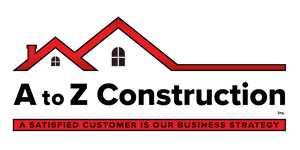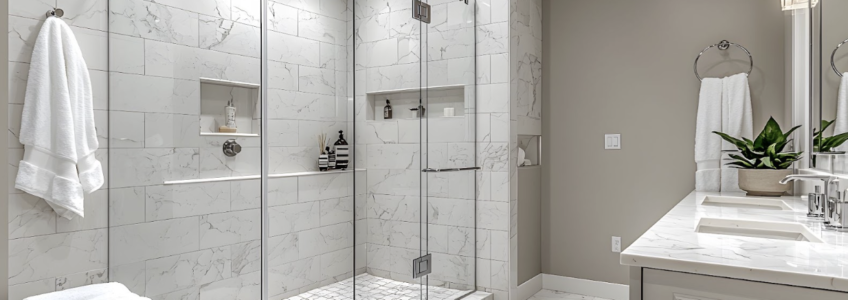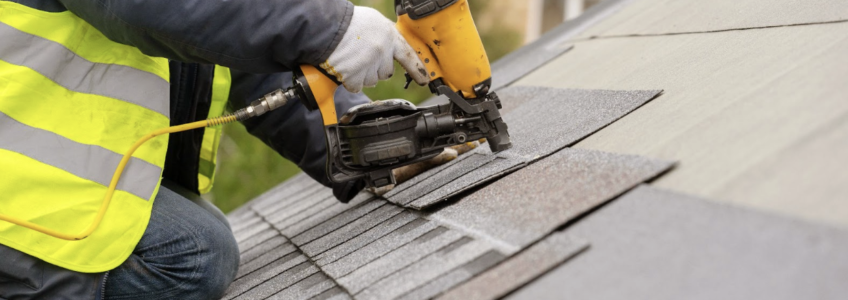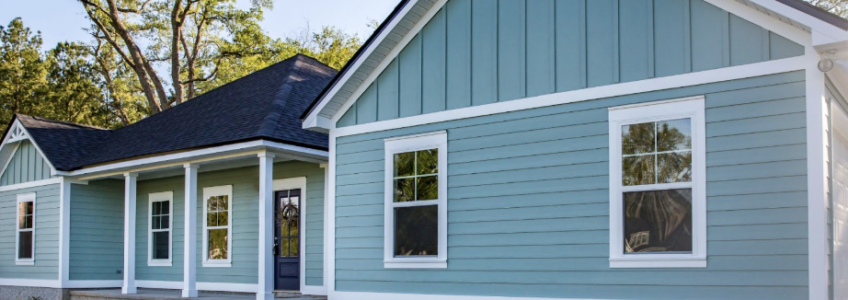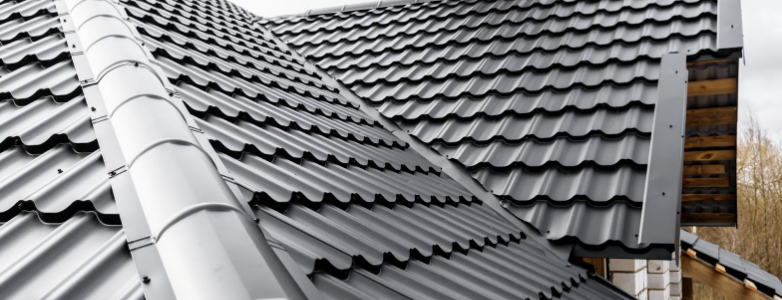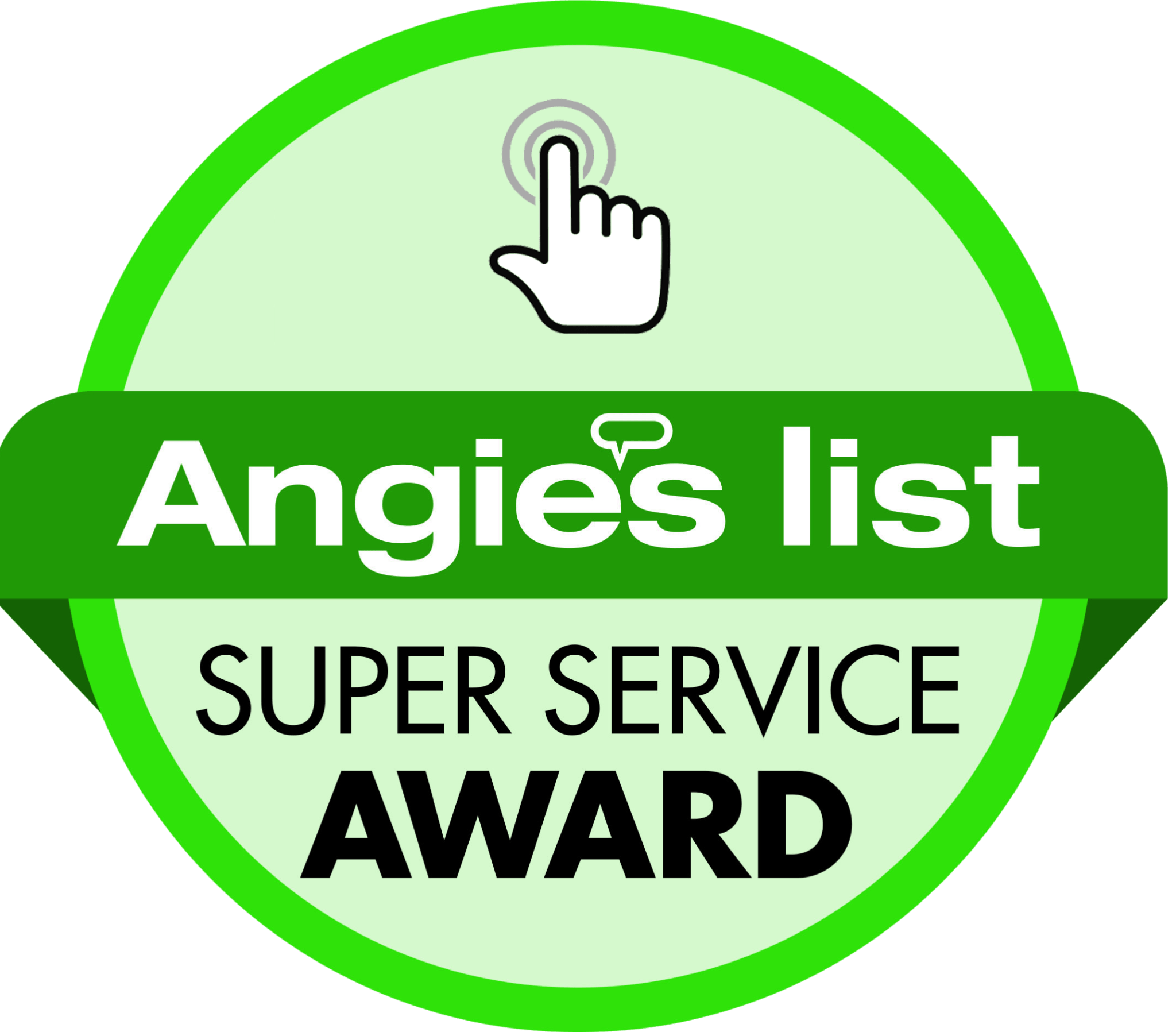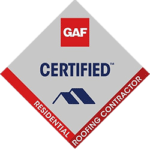Experience Spa-Like Luxury with a Shower Remodel Near Me
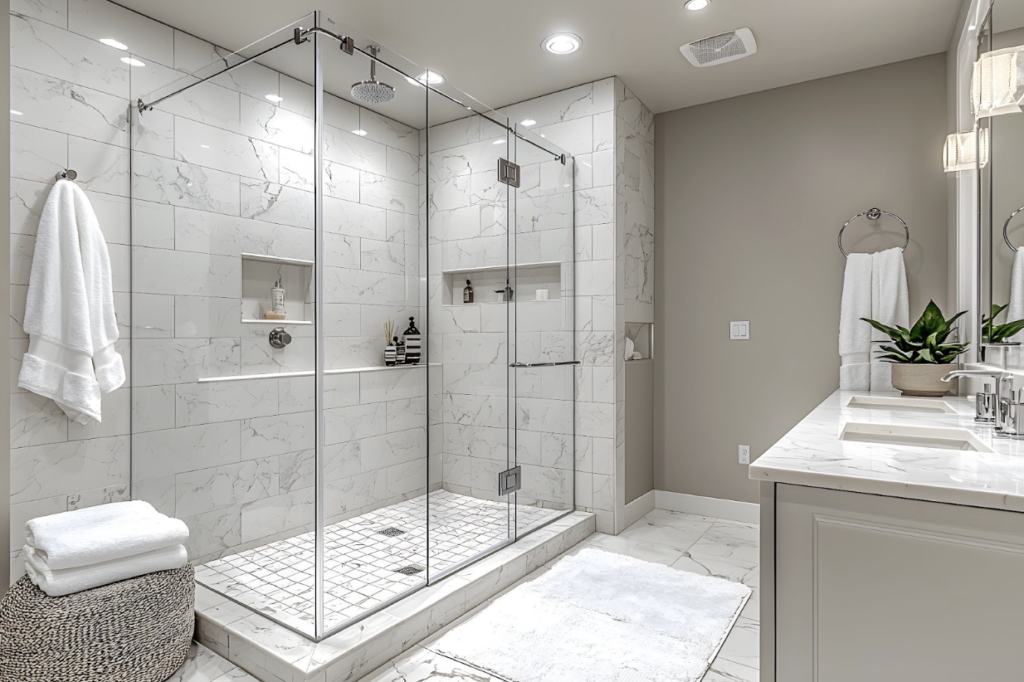
Are you ready to elevate your bathroom with a luxurious, spa-like feel? A well-designed shower can transform your bathroom into a serene retreat, and at A to Z Construction Inc., we specialize in making that transformation a reality. Whether you’re considering a full shower remodel near me or just a simple shower bath remodel, we can help you create a space that’s both functional and visually stunning.
Design Your Shower Remodel with A to Z Construction
With over 20 years of experience, A to Z Construction Inc. is a family-owned business that understands the value of intentional design. Our team works closely with you to craft a customized shower space that meets your needs, matches your style, and maximizes the functionality of your bathroom. From sleek, modern showers to classic, timeless designs, we provide tailored solutions that fit every aesthetic and budget. Here’s what sets us apart:
- Design Your Dream Shower: A shower remodel is more than just replacing old fixtures—it’s about transforming your space into a place where you can relax and unwind. Whether you prefer a luxurious rain shower, a convenient walk-in option, or a stylish combination of both, our experts will guide you through selecting the best features for your space.
- Customizable Options: We also offer options like built-in shelving for added storage, custom tile work for a sophisticated look, and high-end showerheads to provide the ultimate bathing experience.
- Best of Both Worlds: Our shower bath remodel services allow you to combine a luxurious shower and bath setup that maximizes your bathroom’s potential.
- Quality Materials, Expert Craftsmanship: If you’re looking for a fresh, functional space, we’ll ensure your shower remodel is completed with precision and care. We’ve been in business for over two decades, so our experts know the best methods and materials to ensure your shower stands the test of time.
Call A to Z Construction Today!
At A to Z Construction Inc., we pride ourselves on our commitment to quality craftsmanship and timely, professional service. If you’re searching for a shower remodel near me, reach out to our experts! Contact us today at (763) 424-1884, or reach out for a consultation, and let us help you design the spa-like bathroom you’ve always dreamed of!
Storm Damage Repair in Maple Grove: Restoring Your Home
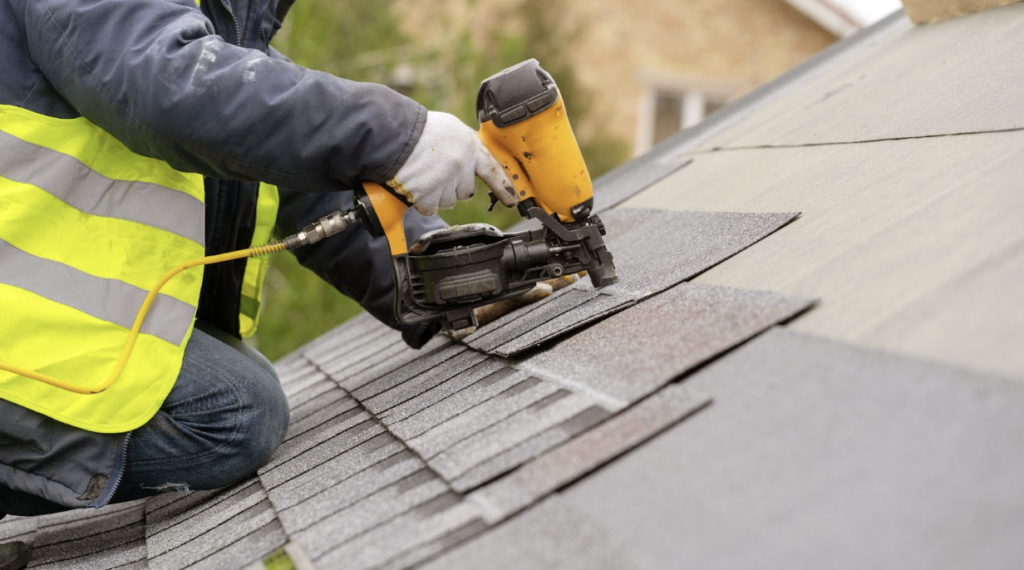
Severe weather can strike unexpectedly, leaving behind significant damage to your home. From hail and wind to fallen trees, a fast response is essential to restoring your home to its original condition. At A to Z Construction Inc., we specialize in comprehensive storm damage repair in Maple Grove, ensuring that your home gets the care it needs after a storm.
Why Choose A to Z Construction for Storm Damage Repair in Maple Grove
As a family-owned business founded in 2004, we understand the importance of providing reliable, professional repair services. We understand your house is not only a secure home for your family, but is your biggest financial asset. For over two decades, A to Z has been committed to offering premier repair services to residents of Maple Grove. Here’s what sets us apart:
- Our team is dedicated to offering high-quality workmanship, whether the damage is minor or extensive. We offer a full range of storm damage repair services, including roof inspections, siding repairs, and window replacements. Our goal is to restore your home efficiently and with minimal disruption to your daily life.
- When it comes to roof repair, it’s crucial to address issues quickly. A compromised roof can lead to further damage to your home’s interior, such as water leaks, mold, and structural concerns. Our expert roofing team has the experience and tools needed to assess the damage thoroughly and provide a solution that will last for years to come.
- At A to Z Construction Inc., we pride ourselves on our transparency and dedication to customer satisfaction. We work closely with insurance companies to ensure that your repair process goes smoothly and without unexpected costs. Whether you’re dealing with roof damage, siding issues, or other storm-related repairs, our team is here to help guide you through every step of the process.
Contact A to Z Construction Today!
If you’re in need of storm damage repair in Maple Grove, look no further than A to Z Construction Inc. We have the expertise and dedication to restore your home to its pre-storm condition. Call us at (763) 424-1884, or reach out today for a consultation, and let us help you protect your home from the lasting effects of storm damage.
Boost Your Home’s Curb Appeal with a Vinyl Siding Upgrade
First impressions can oftentimes make all the difference. This means when it comes time to sell your home, not only do you want it to be in tip-top shape, you want it to look great, too! This means making sure your siding isn’t damaged or in need of an upgrade. In Minnesota, this is doubly important, as the broad spectrum of weather climates we experience can impact the exterior of your home more extremely than in milder climates. If you’re in need of siding installation, vinyl siding is a great upgrade choice that will boost the curb appeal and value of your home!
Why Choose Vinyl Siding?
When it comes time to upgrade your siding, there are a lot of materials to choose from. In Minnesota, it’s important to consider how the different weather climates can affect your siding. So what makes vinyl a great choice?
- First, vinyl siding is deemed a suitable material for Minnesota’s climate due to its resilience in extreme temperatures and outstanding durability. Read more about how Minnesota’s climate affects your siding.
- Secondly, it’s easy to clean and the upkeep is low-maintenance. You can get it clean with a garden hose, and it will naturally resist warping, fading, rot, and corrosion, which makes it a great choice when considering Minnesota’s different weather extremes.
- It’s durable and cost-effective. When compared to other siding options like wood, vinyl is relatively affordable. Pair that with its longevity and durability, and you’re set for decades!
- Versatility is an important quality to consider when choosing siding. Vinyl siding comes in many colors and styles so your home remains uniquely yours.
- Finally, vinyl siding can increase the value of your home! When it’s time to go to market, the durability and minimal upkeep are big selling points. Plus, it looks great, which increases the curb appeal and overall value of your home, making it a top choice for siding options in Minnesota.
A to Z Construction – Siding Installation Experts
If you’re a homeowner, you know that your home is one of your biggest assets. That’s why A to Z Construction is determined to provide high-quality work, fair prices, and the professionalism every customer deserves for their most important investment. When it’s time to upgrade your siding, choose a company that’s been named the #1 Minnesota roofing contractor by hundreds of satisfied clients!
A to Z Construction has been helping Minnesota families upgrade their homes with superior service, expert craftsmanship, and a commitment to quality repairs and remodeling. To start your siding installation project, call us at 763-424-1884. For a free roof inspection, please fill out our online form. We look forward to helping you turn the vision you have for your dream home into a reality.
Metal Roofing Minneapolis: The Ultimate Solution for Your Home
Whether you’ve experienced roof damage from a storm or it’s just time for an upgrade, there are a lot of materials to consider when thinking about your new roof. If you’re looking for options when it comes to roofing in Minneapolis, consider installing a metal roof with A to Z Construction! We are a top-rated Minnesota roofing company consisting of skilled professionals with years of experience in the construction industry.
Marvelous Metal Roofing | Minneapolis
When it’s time for a new roof, many people don’t consider metal roofing, but a metal roof offers many advantages over asphalt and other more familiar options:
- Durability and Longevity: Manufactured from sturdy materials like steel and aluminum, a metal roof is highly resistant to damage from the extreme weather climates found in Minnesota, including torrential rain, hail, wind, lightning, snow, ice, and relentless sunlight. This durability means an increased life span. Most homeowners with a metal roof don’t need to replace it in their lifetime, unlike with asphalt roofs, which require upgrades every decade or so.
- Low-maintenance: It’s what every homeowner wants to hear, right? Metal roofs require nearly no upkeep.
- Energy-Efficient, Eco-Friendly: If you’re trying to keep costs down and make an eco-friendly decision, consider metal roofing. It’s typically made out of recyclable materials, and a metal roof is well-insulated, meaning your energy bill could decrease up to 40%! Great for the planet and your wallet.
- A metal roof looks great! In the past, people have steered clear of metal roofing options because of lack of curb appeal, but the industry is evolving. Metal roofs can mimic the look of any other roofing material, including asphalt shingles and clay tiling!
Choose A to Z – It’s as Easy as 1, 2, 3!
When it comes time to hire a contractor for your new roof, you want to go with a team that provides both expertise and experience. That’s why more and more Minneapolis residents are choosing A to Z Construction for all their roofing needs. We are experts in metal roofing installation, committed to excellence and transparent communication. Your home is a reflection of you, which is why we take pride in offering personalized roofing solutions that fit your needs and budget.
To get more information, you can call us at 763-424-1884. For a free roof inspection, please fill out our online form. When it comes to roofing contractors, choose the best: choose A to Z Construction. It really is that easy!
What Are the Advantages & Disadvantages of Vinyl Siding?
Vinyl siding is a popular choice for homeowners who want a low-maintenance exterior. It is made from various colors and styles of PVC (polyvinyl chloride) resin. Vinyl siding has been around since the 1950s and has become increasingly popular due to its durability and affordability.
There are several advantages to using vinyl siding. First, it is very low-maintenance and requires no painting or staining. It is also resistant to rot, insect damage, and moisture, making it a great choice for homes in harsh weather conditions. Additionally, vinyl siding is available in various colors and styles so that homeowners can choose the perfect look for their homes. However, there are also some disadvantages, such as vinyl siding can crack or fade over time, and it may not be as environmentally friendly as other options.
What Is Vinyl Siding?

Vinyl siding is a popular exterior cladding material used in residential and commercial buildings. It is made from polyvinyl chloride (PVC) resin and other additives that provide durability, color, and texture. Vinyl siding is available in various colors, styles, and profiles, making it a versatile and affordable option for homeowners and builders.
One of the key advantages of vinyl siding is its low maintenance requirements. Unlike wood siding, vinyl siding does not need to be painted or stained regularly and is resistant to rot, insects, and moisture damage. Vinyl siding is also easy to clean with a hose and a mild detergent, making it an attractive choice for busy homeowners.
In addition to its low maintenance requirements, vinyl siding is relatively easy to install. It can be installed over most existing surfaces, including wood, brick, and stucco, and it does not require special tools or equipment. Vinyl siding is also lightweight and easy to handle, which can reduce installation time and labor costs.
However, there are also some disadvantages to vinyl siding. One of the main concerns is its environmental impact. Vinyl siding is made from non-renewable resources and can release toxic chemicals during manufacturing and disposal. Additionally, vinyl siding can fade and become brittle, especially in extreme weather conditions.
Overall, vinyl siding is a popular and affordable option for homeowners and builders who want a low-maintenance, durable, and versatile exterior cladding material. However, weighing the advantages and disadvantages before hiring a siding contractor is important.
Advantages of Vinyl Siding
Vinyl siding is a popular choice for homeowners due to its many advantages. Here are some key benefits of updating your home with vinyl siding.
Cost Effectiveness
One of the main advantages of vinyl siding is its affordability. Vinyl is less expensive than other siding materials, such as wood or brick, making it a cost-effective option for homeowners on a budget. Additionally, vinyl siding requires less maintenance than other materials, saving homeowners money in the long run.
Low Maintenance
Vinyl siding is low maintenance, another reason it is a popular choice for homeowners. Unlike wood or brick, vinyl siding does not require painting or staining, so it will not fade or peel over time. Additionally, vinyl is moisture-resistant, so it will not rot or warp like wood. This means homeowners do not have to worry about regular maintenance or siding repairs.
Durability
Vinyl siding is also durable and long-lasting. It can withstand extreme weather conditions that can cause storm damage, such as high winds, heavy rain, and hail, making it a good choice for homes in harsh climates. Additionally, vinyl siding is resistant to fading, cracking, and peeling, so it will maintain its appearance for many years.
Variety of Styles and Colors
Finally, vinyl siding offers various styles and colors, making it easy to find a look that fits your home’s aesthetic. Vinyl siding can be made to look like wood, stone, or other materials, so homeowners can achieve the look they want without the added cost or maintenance of those materials.
In summary, vinyl siding is a cost-effective, low-maintenance, durable, and versatile option for homeowners looking to update their home’s exterior.
Disadvantages of Vinyl Siding
Vinyl siding has many benefits, but it also has some disadvantages. Here are some of the most significant drawbacks of vinyl siding.
Environmental Concerns
Vinyl siding is made from PVC, a type of plastic. PVC is not biodegradable and can release harmful chemicals when it is burned. Additionally, the production of PVC requires a significant amount of energy, which contributes to greenhouse gas emissions.
Potential for Damage
Vinyl siding can be damaged by strong winds, hail, and other extreme weather conditions. If the siding is not installed correctly, it can also warp or buckle. Additionally, vinyl siding is not fire-resistant and can melt or burn if exposed to high temperatures.
Lower Resale Value
Vinyl siding is one of the most affordable types of siding, but it can also lower the resale value of a home. Some home buyers prefer more traditional siding materials like wood or brick, and may be less willing to pay a premium for a home with vinyl siding. Additionally, vinyl siding can fade over time, making a home look less attractive.
Overall, while vinyl siding has many benefits, it also has some drawbacks that homeowners should consider before deciding.
Is Vinyl Siding Right for Your Home?
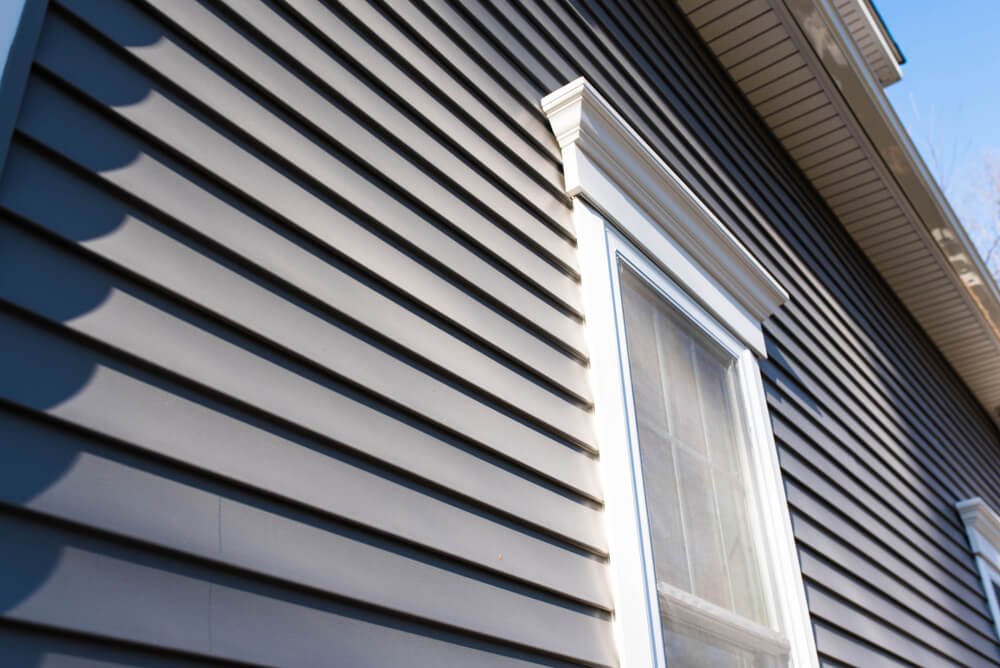
Vinyl siding has its advantages and disadvantages, and ultimately, the decision to use it will depend on the homeowner’s specific needs and preferences.
On the positive side, vinyl siding is relatively affordable, low-maintenance, and available in various colors and styles. It is also durable and can last for several decades with proper care. Additionally, vinyl siding can help improve a home’s energy efficiency by providing insulation and reducing heat loss.
However, there are also some potential drawbacks to using vinyl siding. For example, it can crack or fade over time and may not be as visually appealing as other materials, such as wood or brick. Additionally, vinyl siding can be prone to moisture damage if not installed correctly, and it may not be as environmentally friendly as some other options.
Overall, vinyl siding can be a good choice for homeowners looking for an affordable, low-maintenance option that will last for many years. However, those prioritizing aesthetics or environmental sustainability may want to consider other materials. Contact A to Z Construction today to learn about our vinyl siding options.
Storm Damage Roof Repair Process: What Can I Expect?
In the aftermath of a storm, the last thing you want to worry about is the state of your roof. Yet, it’s often one of the areas most susceptible to damage. Understanding the storm damage roof repair process can alleviate some of the stress associated with this situation. Let’s walk through what happens from start to finish.
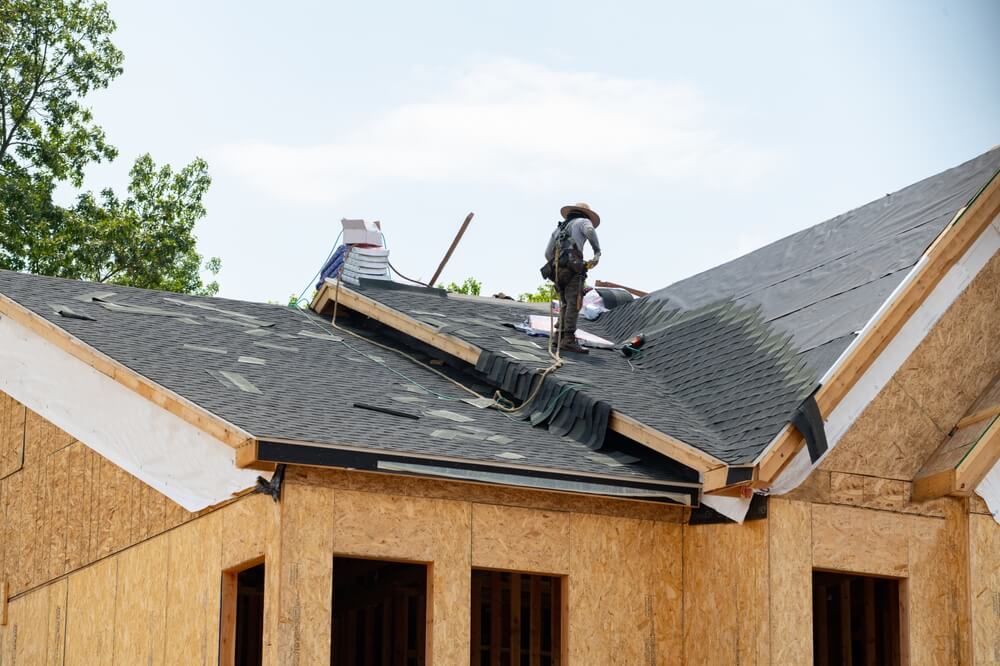
Assessing the Damage
When you notice damage to your roof after a storm, the first step is to assess the extent of the damage. This involves inspecting the roof for any missing shingles, cracks, or leaks. It’s crucial to document the damage thoroughly, as this will be essential when filing an insurance claim.
Filing the Claim
Once you’ve documented the damage, the next step is to file a claim with your insurance company. This typically involves contacting your insurance agent and providing them with the necessary information and documentation. They will then send an adjuster to assess the damage and determine if the claim is valid.
Approval and Payment
If the insurance company approves the claim, they will issue a check to cover the cost of repairs. This check is typically made out to you and your contractor or construction company. Once you receive the check, you can provide it to your contractor to initiate the repair process.
The Repair Process
With the necessary funds in hand, your contractor can begin the repair process. This typically starts with cleaning the area around the roof to ensure a safe working environment. A netting system may be set up to protect the sides of your home during the tear-off process.
Tear-Off and Underlayment
The next step is to remove the damaged shingles and any underlying materials. This process, known as tear-off, involves stripping away the old roofing materials to prepare for the installation of new ones. Once the roof is cleared, the contractor will install new underlayment to provide an additional layer of protection against the elements.
Reshingling
With the underlayment in place, it’s time to reshingle the roof. New shingles will be carefully installed to ensure a secure and watertight seal. This step not only restores the appearance of your roof but also enhances its durability and longevity.
Cleanup and Inspection
Once the new roof is installed, the contractor will thoroughly clean up the area, removing any debris and ensuring that your property looks as good as new. A magnet may be used to pick up any stray nails to prevent injury and damage to your property.
Conclusion
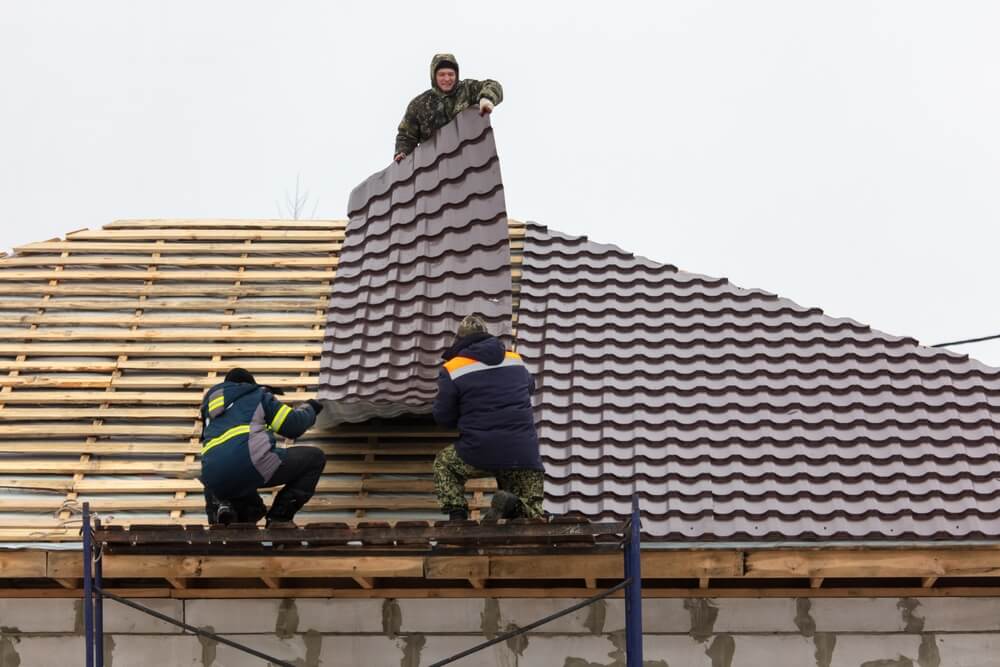
Experiencing storm damage to your roof can be a stressful experience, but knowing what to expect during the repair process can help ease some of that stress. By following these steps, you can restore your roof to its former glory and protect your home from further damage. If you find yourself in need of assistance, don’t hesitate to contact A to Z Construction today for reliable and professional roof repair services.
Is Your Roof Ready? Pre-Storm Preparation Tips for Homeowners
When storms strike, our homes stand as the first line of defense. But are we adequately prepared for the onslaught? Preparing for storms can be challenging, but taking a few proactive steps can significantly mitigate potential damage from a storm and ensure the safety of our homes and loved ones.
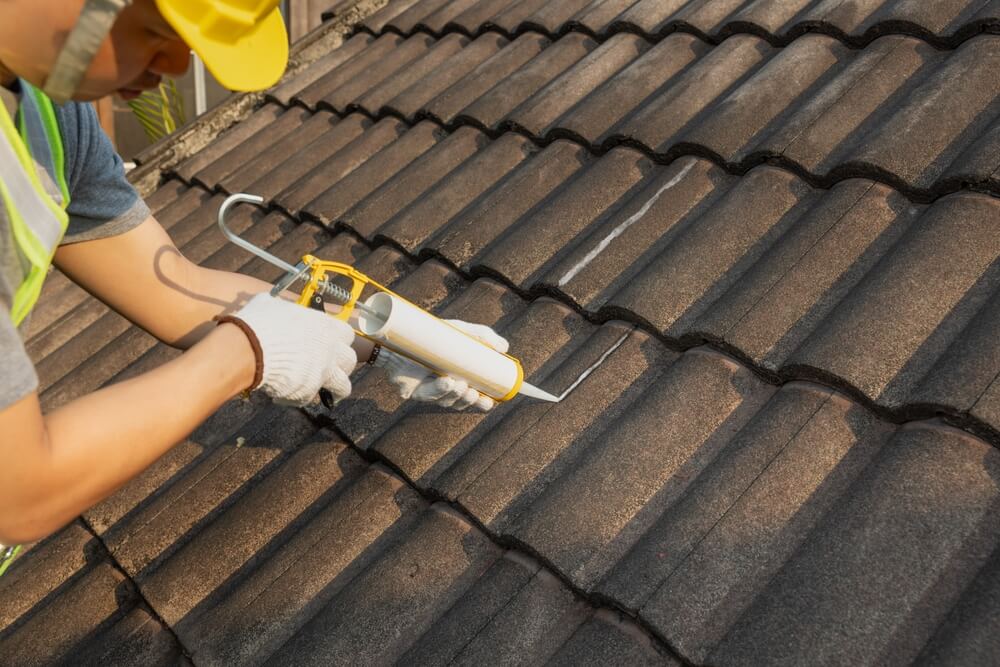
Understanding the Nature of Storms
Before exploring preparations, it’s essential to grasp that storms, whether thunderous downpours or storms filled with hail are acts of nature beyond our control. In the state of Minnesota, where storms are a common occurrence, the question often arises: will filing an insurance claim for storm damage lead to increased premiums? Surprisingly, the answer is no. As storms are considered acts of God, insurance premiums typically remain unaffected by legitimate claims.
Assessing Roof Condition
One of the most vulnerable areas of our homes during storms is the roof. While it’s true that we can’t prevent storm damage entirely, maintaining our roofs can significantly reduce the risk. Older roofs, in particular, are more susceptible to hail damage. Therefore, regular roof maintenance is crucial. Keep your roof clear of debris and ensure there are no overhanging branches or objects that could potentially cause damage during a storm.
Exploring Shingle Varieties
Not all shingles are created equal when it comes to weathering the storm. While no shingle is entirely hail-proof, certain types exhibit greater resilience. Various shingle materials, from asphalt to composite, offer different levels of protection. Investing in shingles designed to withstand hail can provide an added layer of defense against storm damage.
Considering Metal and Slate Roofing
For those seeking superior storm protection, metal, and slate roofing present compelling options. These materials boast exceptional durability and resistance to hail damage. While they may entail a higher initial investment, the long-term benefits in terms of durability and peace of mind during storms make them worthy considerations.
Taking Proactive Measures
Beyond roofing materials, there are additional proactive measures homeowners can take to fortify their homes against storms. Ensuring proper insulation and reinforcement of windows and doors can prevent water infiltration and structural damage. Additionally, securing outdoor furniture and fixtures ahead of a storm can minimize potential projectiles and safeguard both property and occupants.
Conclusion
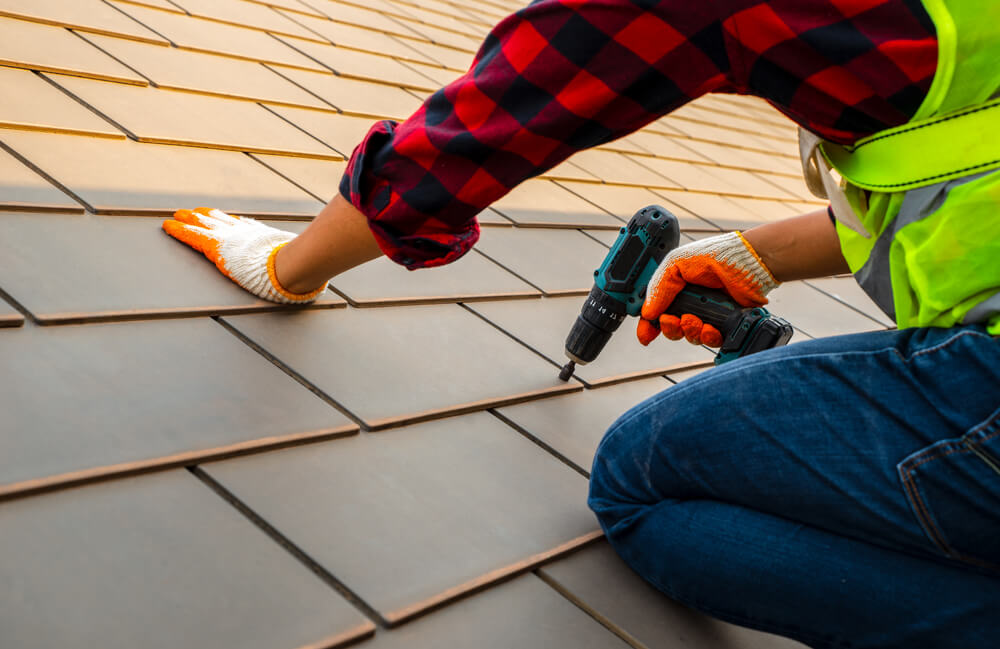
While we may not be able to control the whims of nature, we can certainly take steps to prepare and protect our homes against its fury. Regular maintenance, investing in resilient roofing materials, and implementing proactive measures can all contribute to minimizing storm damage. Remember, when it comes to safeguarding your home, preparation is key.
For further assistance with storm preparation or roofing concerns, don’t hesitate to contact A to Z Construction today. Our team is dedicated to ensuring your home is resilient in the face of nature’s challenges.
What Do Insurance Adjusters Look for When Inspecting a Roof?
When it comes to assessing property damage, insurance adjusters play a crucial role. Whether it’s damage from a storm, fire, or any other unforeseen event, these professionals are tasked with evaluating the extent of the damage and determining the appropriate compensation. In this blog post, we’ll take a closer look at what insurance adjusters do and how they go about inspecting roofs on homes.
The Walk Around: Assessing Exterior Damage
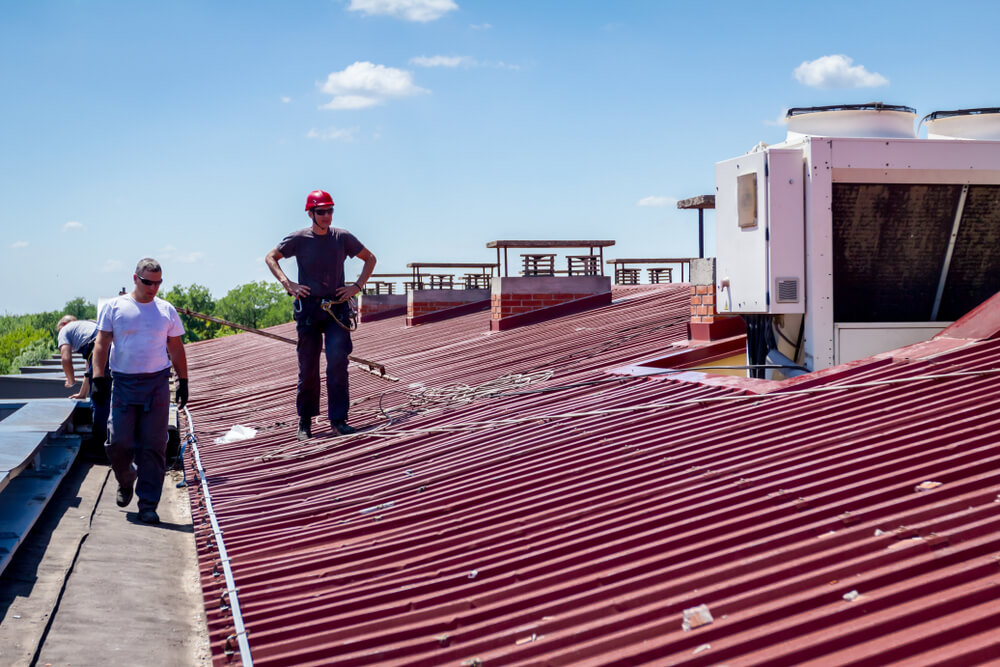
One of the first steps insurance adjusters take is conducting a thorough walk around the property. During this process, they carefully inspect the exterior for any signs of damage. This includes examining downspouts, and metal fixtures, and looking for oxidation left from hail, known as spatter. By observing the distribution of damage, adjusters can begin to piece together the story of what occurred.
Examining the Roof: Identifying Key Indicators
Once the exterior assessment is complete, insurance adjusters turn their attention to the roof. Here, they look for specific indicators of damage, such as bruising to the shingles, broken matting, or missing granules. These telltale signs help adjusters determine whether the damage was caused by a recent storm or another event.
Interior Inspection: Assessing Damage Inside the Property
In addition to exterior assessments, insurance adjusters also inspect the interior of the property. This involves looking for any structural damage, water leaks, or other issues that may have occurred as a result of the external damage. By thoroughly examining both the exterior and interior, adjusters can provide a comprehensive assessment of the overall damage.
Documenting Findings: Recording Evidence
Throughout the assessment process, insurance adjusters meticulously document their findings. This includes taking photographs, measurements, and detailed notes to support their assessment. By maintaining thorough documentation, adjusters ensure that their evaluation is accurate and can be effectively communicated to the insurance company.
Determining Compensation: Calculating Losses
Once the assessment is complete, insurance adjusters work to determine the appropriate compensation for the property owner. This involves considering various factors, including the extent of the damage, the cost of repairs, and any applicable insurance policies. By carefully evaluating these factors, adjusters aim to provide fair and accurate compensation to help property owners recover from their losses.
Conclusion
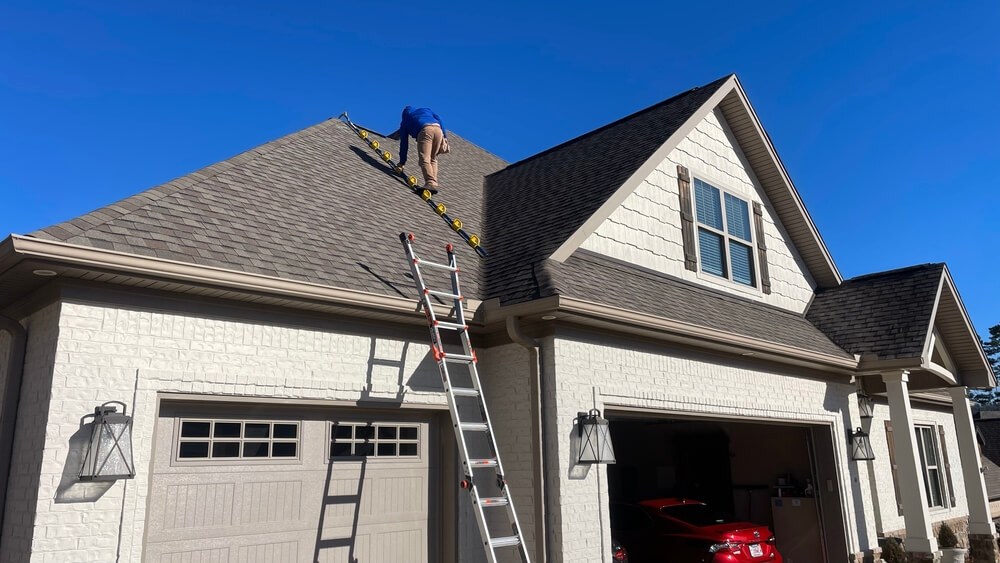
Insurance adjusters play a vital role in assessing property damage and facilitating the insurance claims process. Through meticulous inspections and thorough documentation, these professionals help ensure that property owners receive the compensation they deserve. If you’ve experienced property damage, don’t hesitate to contact A to Z Construction today for assistance with your insurance claim.
What Should I Do if I Didn’t Get Enough Money for My Roof Insurance Claim?
When it comes to dealing with roof insurance claims, homeowners often find themselves navigating a complex landscape of approvals, inspections, and negotiations. Understanding the details of this process can be crucial in ensuring that you receive adequate coverage for your roof repair or replacement. In this guide, we’ll walk you through the key steps involved in filing a roof insurance claim and provide tips on how to maximize your chances of success.

Understanding Partial Approvals
The Challenge of Partial Coverage
One common issue that homeowners encounter is receiving only partial approval for their roof insurance claim. This typically occurs when an adjuster assesses the damage and determines that only a portion of the roof needs to be replaced. However, getting partial approval can be frustrating, especially if the damage is extensive and warrants a full roof replacement.
Importance of Representation
To avoid the pitfalls of partial approvals, it’s essential to have proper representation during the claims process. Working with a qualified contractor who can advocate on your behalf can significantly increase your chances of getting the full coverage you need. Contractors understand the intricacies of roof damage and can effectively communicate the extent of the repairs required to the insurance company.
Maximizing Coverage
Making Your Case
When filing a roof insurance claim, it’s crucial to present a compelling case for why a full roof replacement is necessary. This may involve providing evidence of the roof’s age, existing damage, and the potential risks associated with patchwork repairs. By articulating these factors clearly to the insurance adjuster, you can strengthen your argument for full coverage.
Supplementing Your Claim
In some cases, it may be necessary to supplement your initial claim with additional evidence or documentation. This could include photographs of the damage, estimates from multiple contractors, or reports from roofing experts. By providing thorough documentation, you can address any oversights or discrepancies in the initial assessment and increase the likelihood of receiving full compensation for your roof replacement.
Working Towards Resolution
Negotiating with the Insurance Company
Negotiation plays a crucial role in the roof insurance claims process. If you receive partial approval or encounter resistance from the insurance company, don’t be afraid to push back and advocate for your rights. Working with a contractor who is experienced in negotiating with insurance adjusters can help level the playing field and ensure that your interests are represented effectively.
Seeking Fair Treatment
Ultimately, the goal of the roof insurance claim process is to ensure that homeowners receive fair treatment and adequate compensation for their roof repairs or replacements. By staying informed, enlisting proper representation, and advocating for your needs, you can navigate this process with confidence and achieve a successful outcome.
Conclusion

Filing a roof insurance claim can be a challenging process, but with the right approach, you can maximize your chances of success. By understanding the dynamics of partial approvals, seeking proper representation, and advocating for your needs, you can secure the coverage you need for a full roof replacement. Don’t settle for partial coverage—fight for your rights and ensure that your home is properly protected. For further assistance, feel free to contact A to Z Construction today.
How Do I Properly Document Roof Damage for an Insurance Claim?
Roof damages can be a homeowner’s nightmare, potentially leading to costly repairs if left unattended. Whether it’s due to harsh weather conditions or simply wear and tear over time, it’s crucial to recognize the signs of damage early on. In this guide, we’ll explore the process of documenting roof damages and how to qualify for insurance adjusters to assess the situation.
Recognizing the Signs
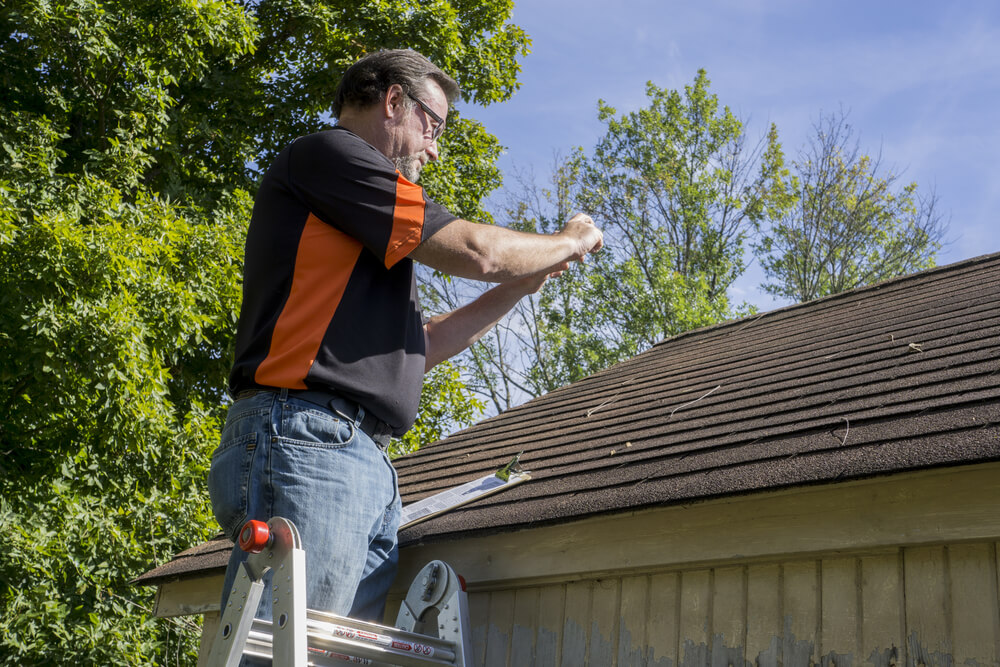
One of the primary indicators of roof damage is collateral damage around the home. This includes examining downspouts, metals, and plastics for any signs of cracks or dents. Additionally, inspecting the siding for unexplained damage can provide valuable insights into the condition of your roof. These collateral damages often tell a story, hinting at the presence of hail or other weather-related issues.
Documenting Damage
When a contractor assesses your roof, they focus on documenting any visible damage thoroughly. This involves inspecting the shingles for bruising or signs of impact, which could indicate hail or storm-related damage. By capturing detailed photos of the affected areas, contractors can build a compelling case for weather-related damage, such as missing shingles or granule loss.
Qualifying for Insurance Adjusters
Meeting Qualification Criteria
Before an insurance adjuster can assess your roof for damages, certain criteria must be met. Contractors play a crucial role in determining whether your home qualifies for inspection. They look for evident signs of damage, such as collateral damage and visible signs of wear and tear. These initial assessments help determine the need for further inspection by insurance adjusters.
Providing Evidence
Documenting roof damages effectively is essential for convincing insurance adjusters of the need for coverage. Contractors rely on detailed documentation, including photographs and written reports, to support their claims. By providing compelling evidence of weather-related damages, homeowners increase their chances of receiving adequate coverage for repairs or replacement.
Conclusion
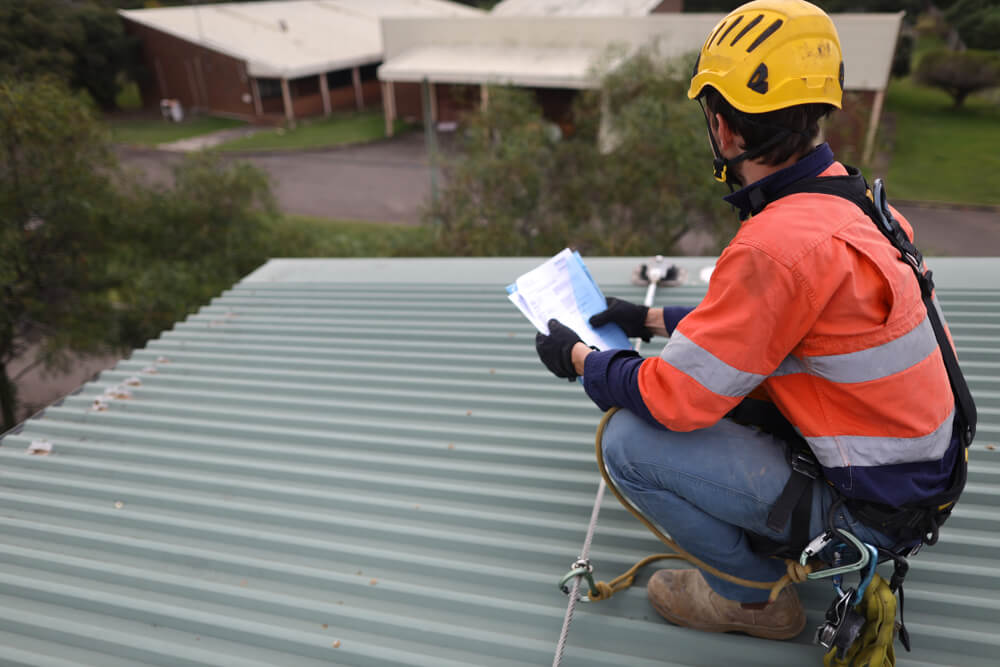
Documenting roof damages is a critical step in ensuring timely repairs and maximizing insurance coverage. By recognizing the signs of damage, homeowners can take proactive steps to address issues before they worsen. Working with qualified contractors and providing thorough documentation significantly increases the likelihood of qualifying for insurance adjusters’ assessments. Remember, early intervention is key to preserving the integrity of your roof and safeguarding your home against potential damages. For expert assistance and inquiries, don’t hesitate to contact A to Z Construction today.


